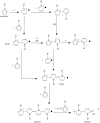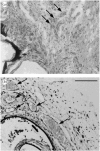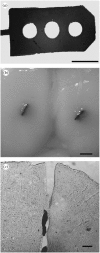Polypyrrole-based conducting polymers and interactions with biological tissues
- PMID: 17015302
- PMCID: PMC1885362
- DOI: 10.1098/rsif.2006.0141
Polypyrrole-based conducting polymers and interactions with biological tissues
Abstract
Polypyrrole (PPy) is a conjugated polymer that displays particular electronic properties including conductivity. In biomedical applications, it is usually electrochemically generated with the incorporation of any anionic species including also negatively charged biological macromolecules such as proteins and polysaccharides to give composite materials. In biomedical research, it has mainly been assessed for its role as a reporting interface in biosensors. However, there is an increasing literature on the application of PPy as a potentially electrically addressable tissue/cell support substrate. Here, we review studies that have considered such PPy based conducting polymers in direct contact with biological tissues and conclude that due to its versatile functional properties, it could contribute to a new generation of biomaterials.
Figures








References
-
- Adejolu S.B, Wallace G.G. Conducting polymers and the bioanalytical sciences: new tools for biomolecular communications—a review. Analyst. 1996;121:699–703. doi:10.1039/an9962100699 - DOI - PubMed
-
- Aoki T, Tanino M, Sanui K, Ogata N, Kumakura K, Okano T, Sakurai Y, Watanabe M. Culture of mammalian cells on polypyrrole-coated IT0 as a biocompatible electrode. Synth. Met. 1995;71:2229–2230. doi:10.1016/0379-6779(94)03235-X - DOI
-
- Aoki T, Tanino M, Sanui K, Ogata N, Kumakura K. Secretory function of adrenal chromaffin cells cultured on polypyrrole films. Biomaterials. 1996;17:1971–1974. doi:10.1016/0142-9612(96)00015-4 - DOI - PubMed
-
- Armes S.P. Optimum reaction conditions for the polymerization of pyrrole by iron (III) chloride in aqueous solution. Synth. Mat. 1987;20:365–371.
-
- Ateh D.D, Vadgama P, Navsaria H. Culture of human keratinocytes on polypyrrole-based conducting polymers. Tissue Eng. 2006;12:645–655. doi:10.1089/ten.2006.12.645 - DOI - PubMed
Publication types
MeSH terms
Substances
LinkOut - more resources
Full Text Sources
Other Literature Sources
